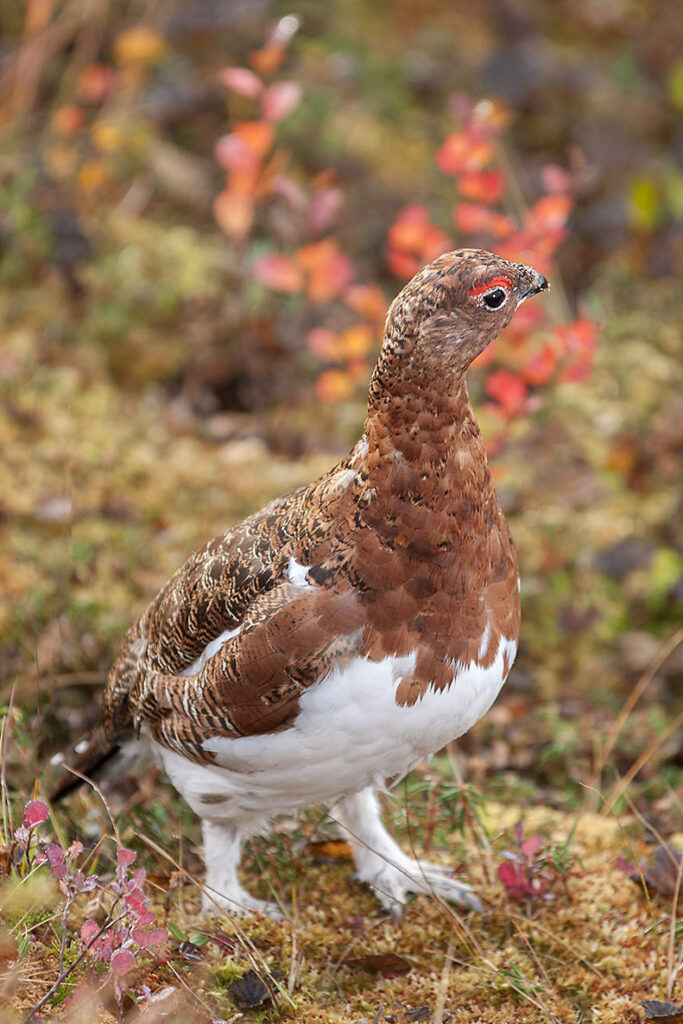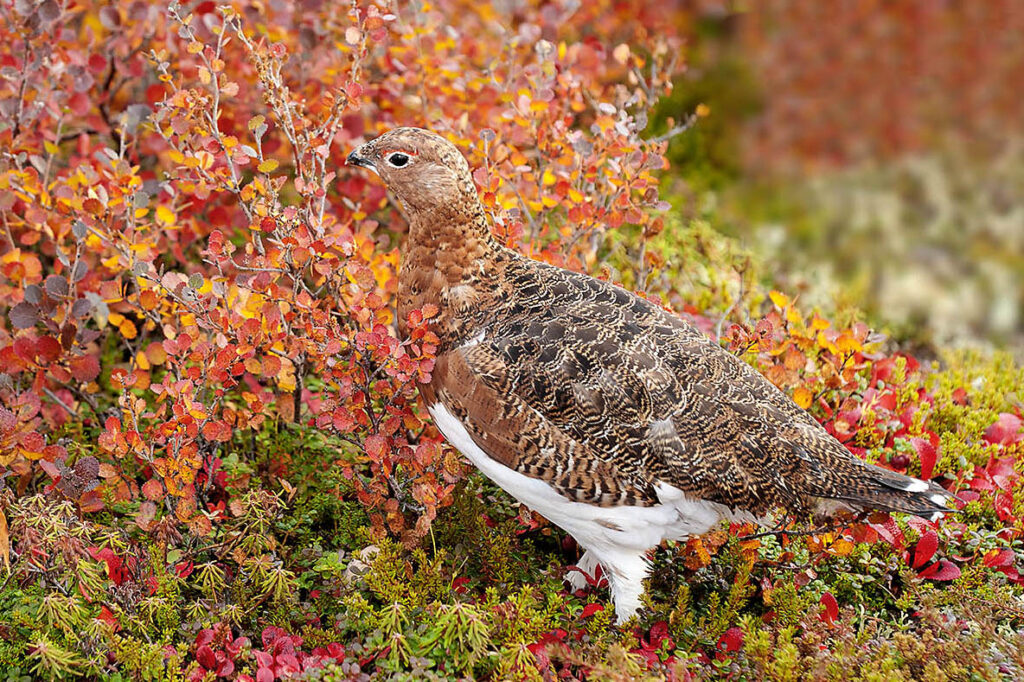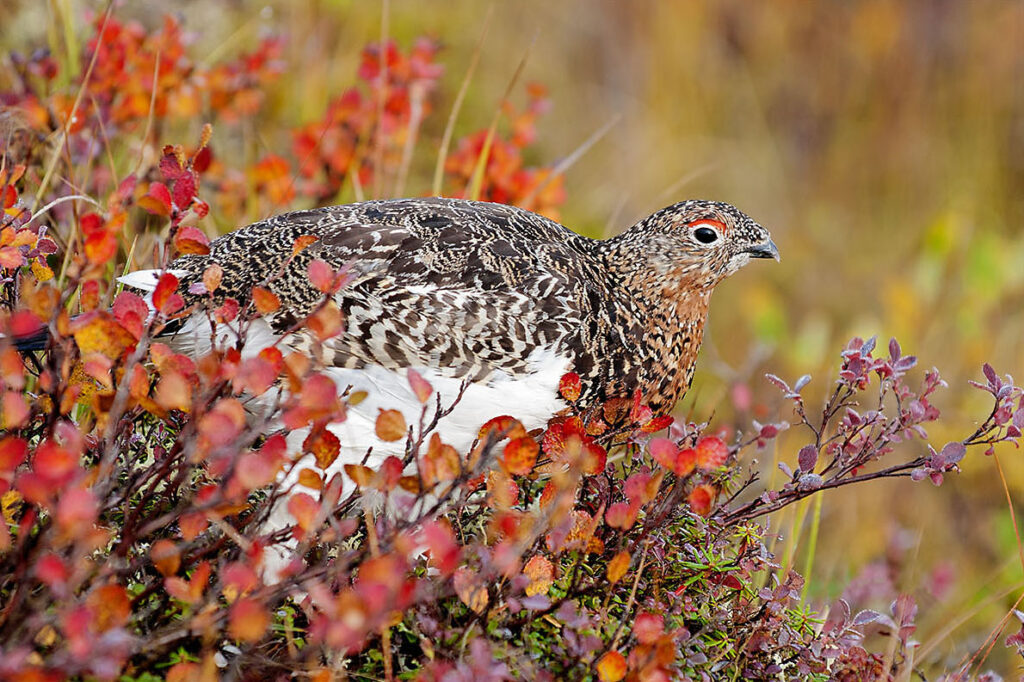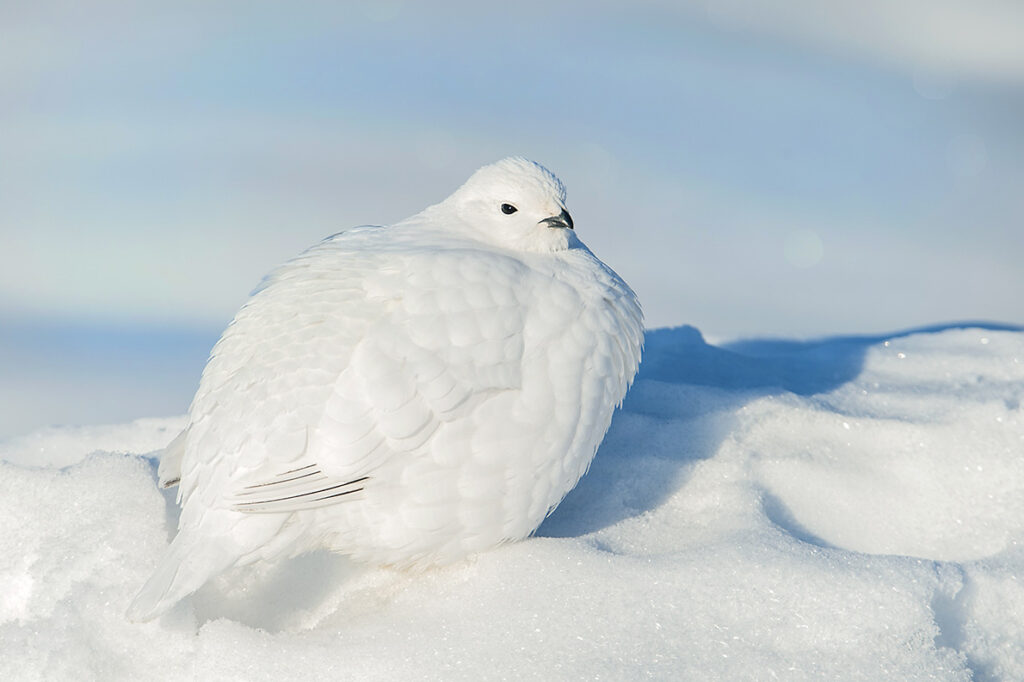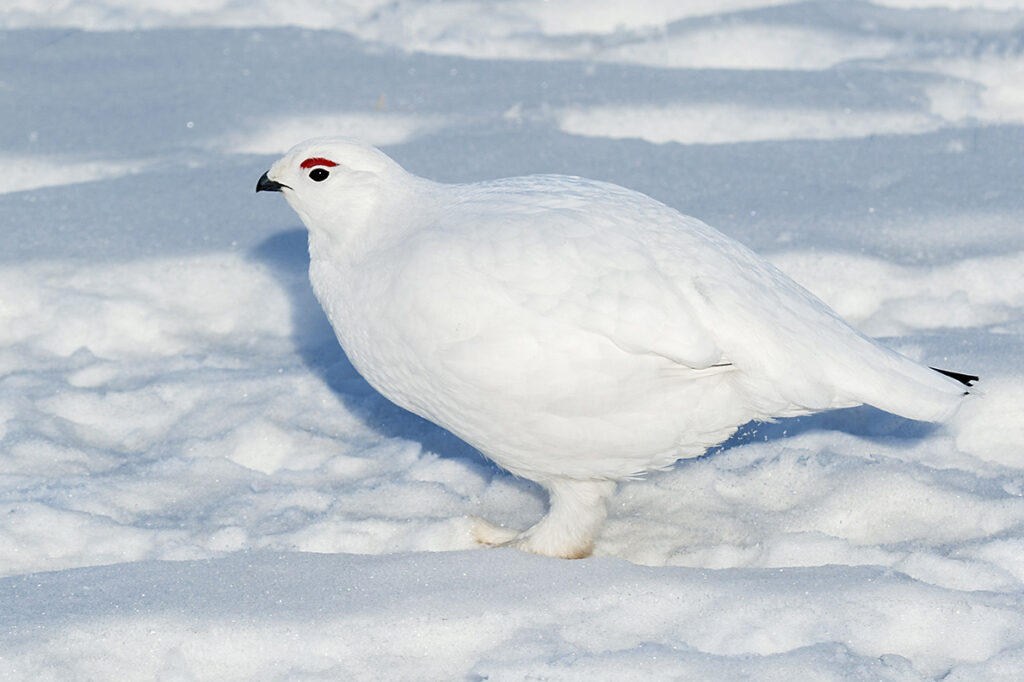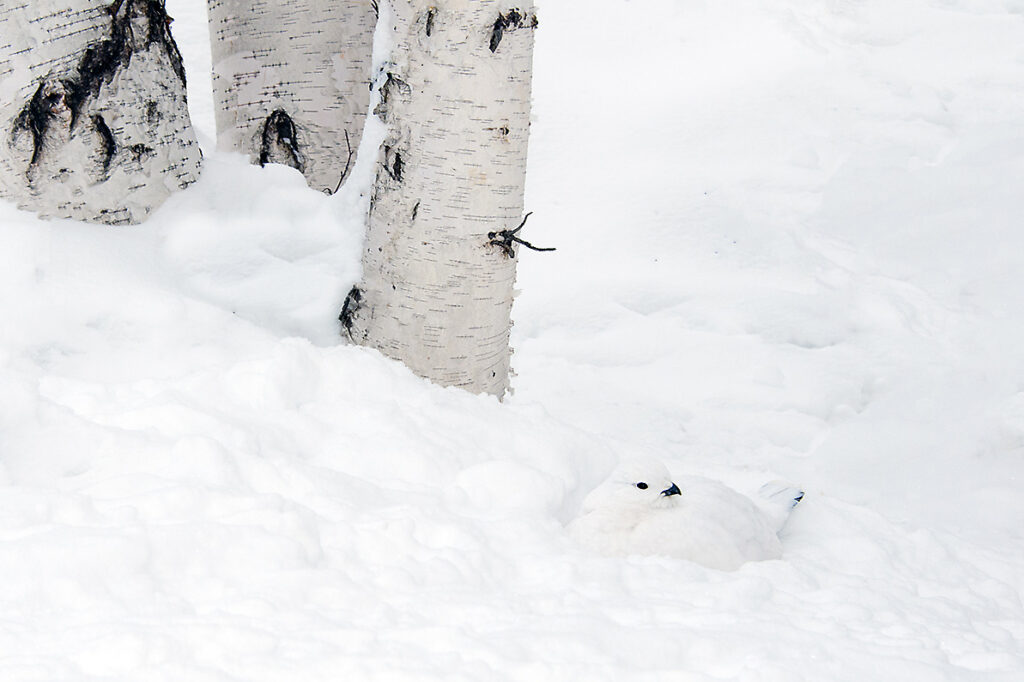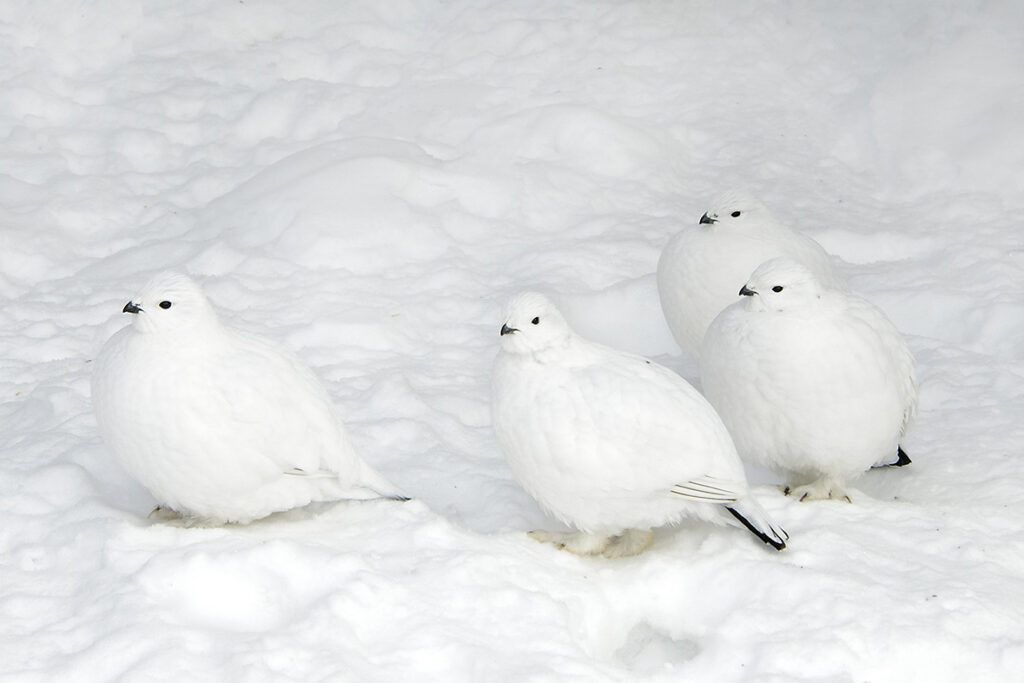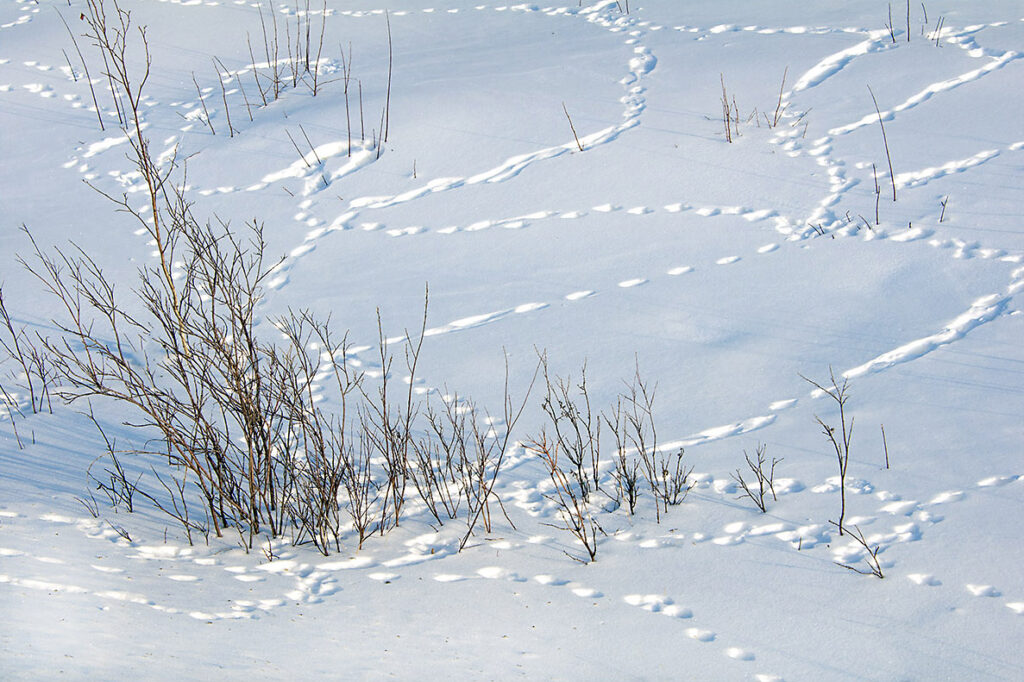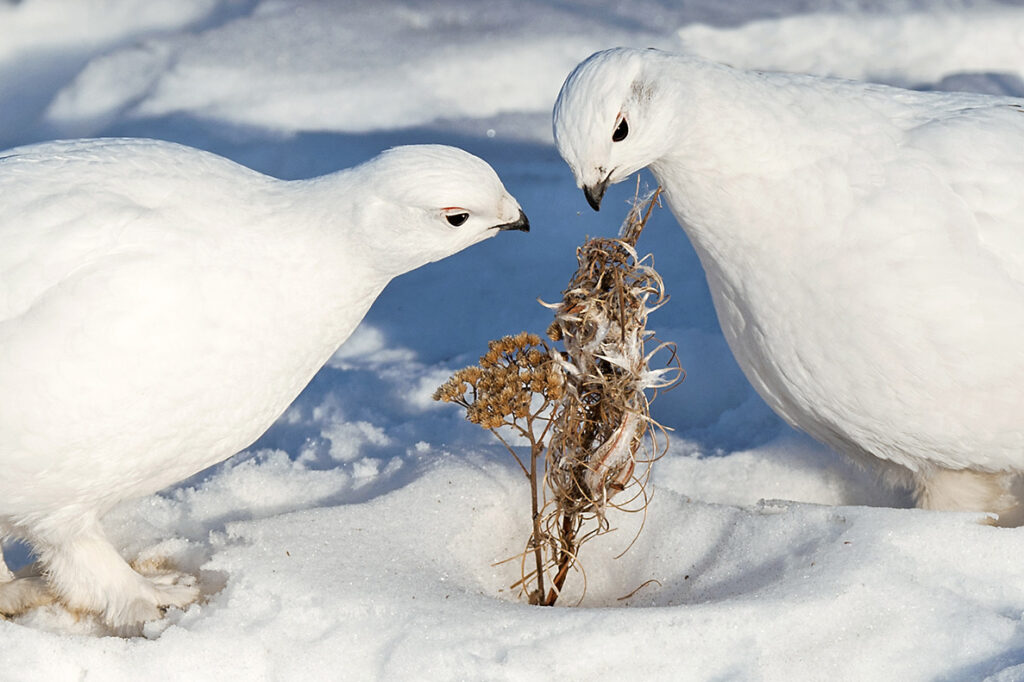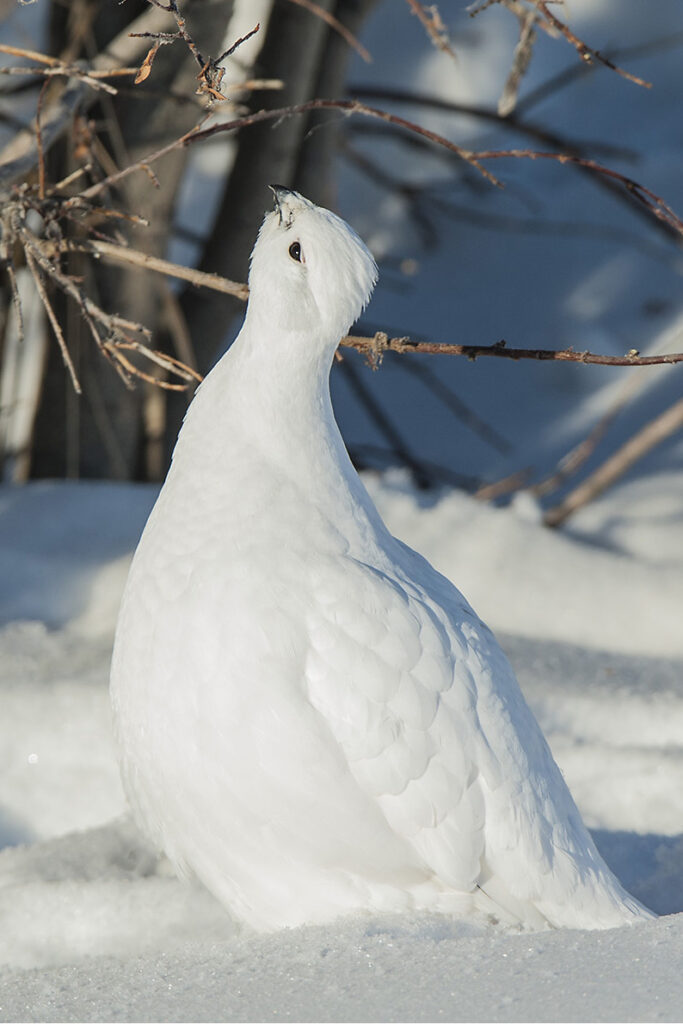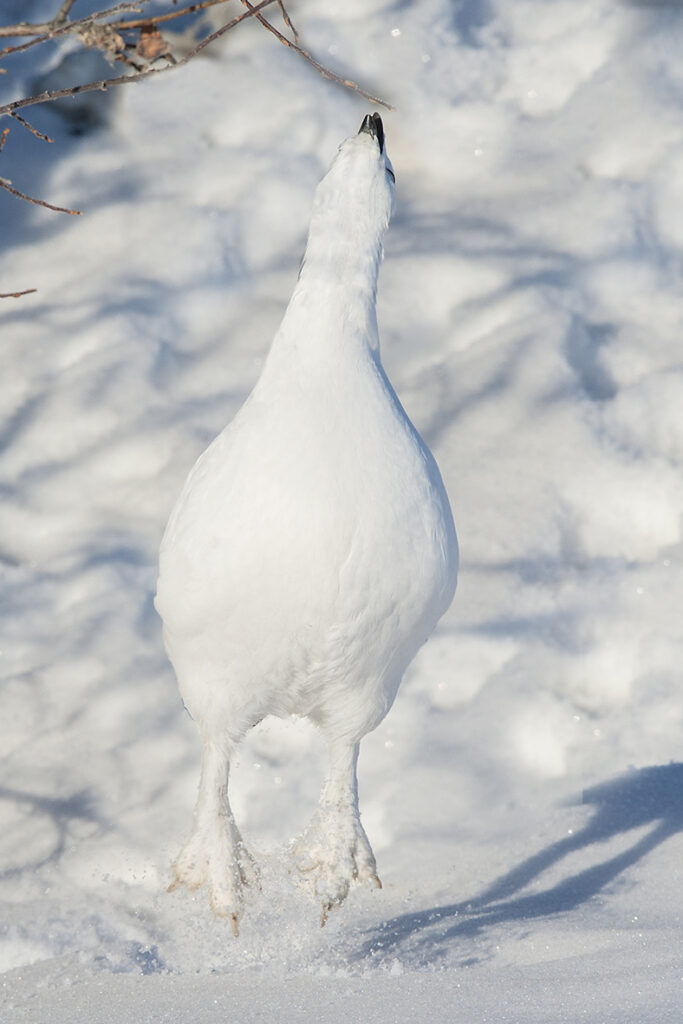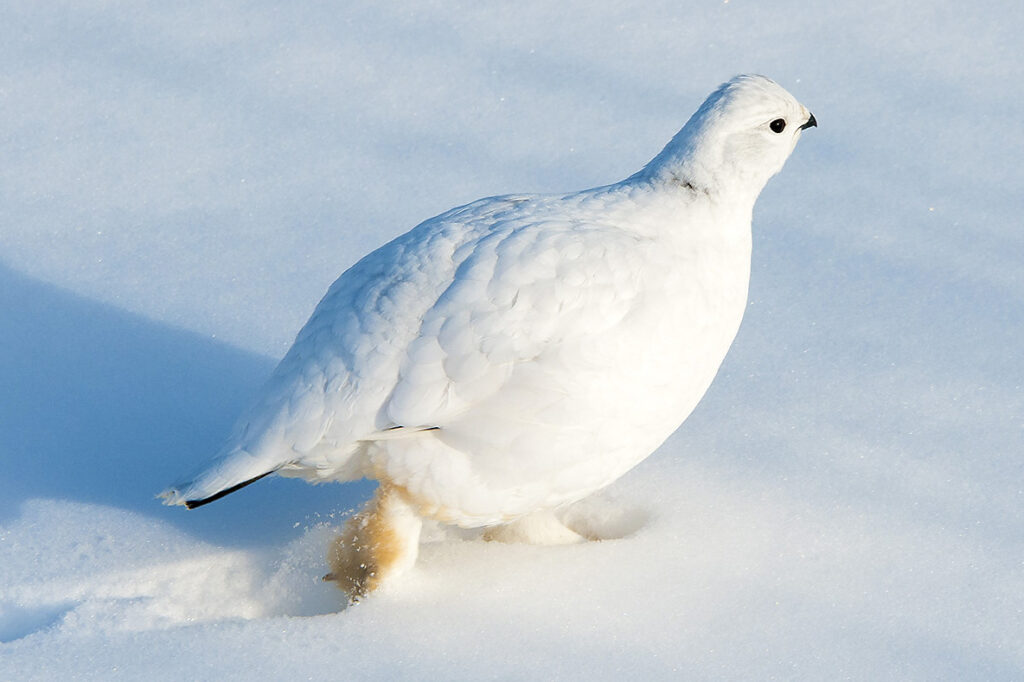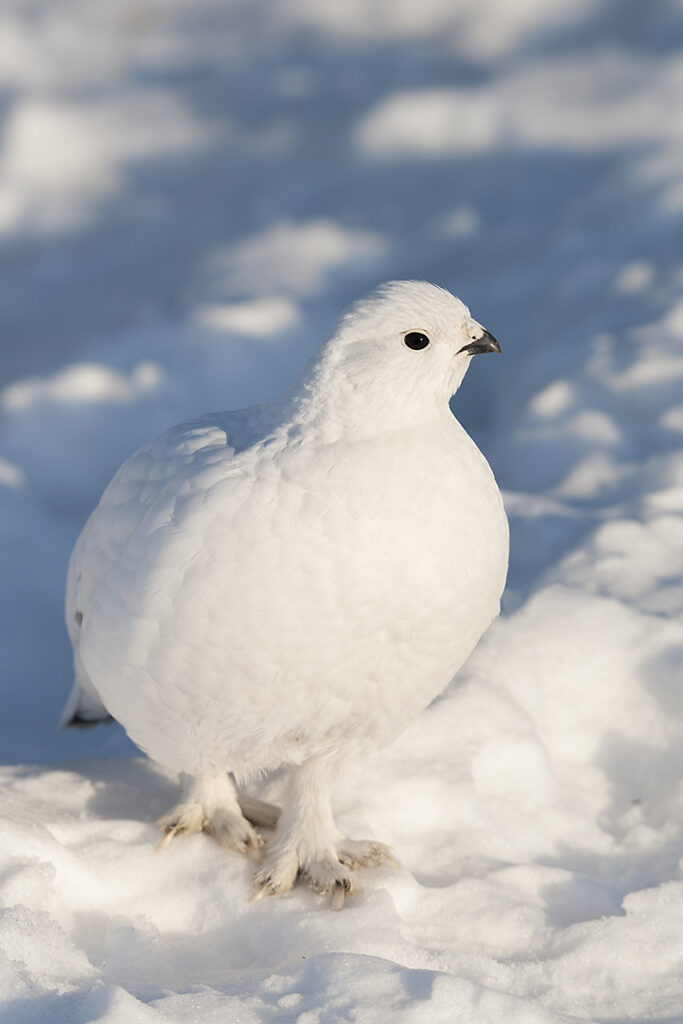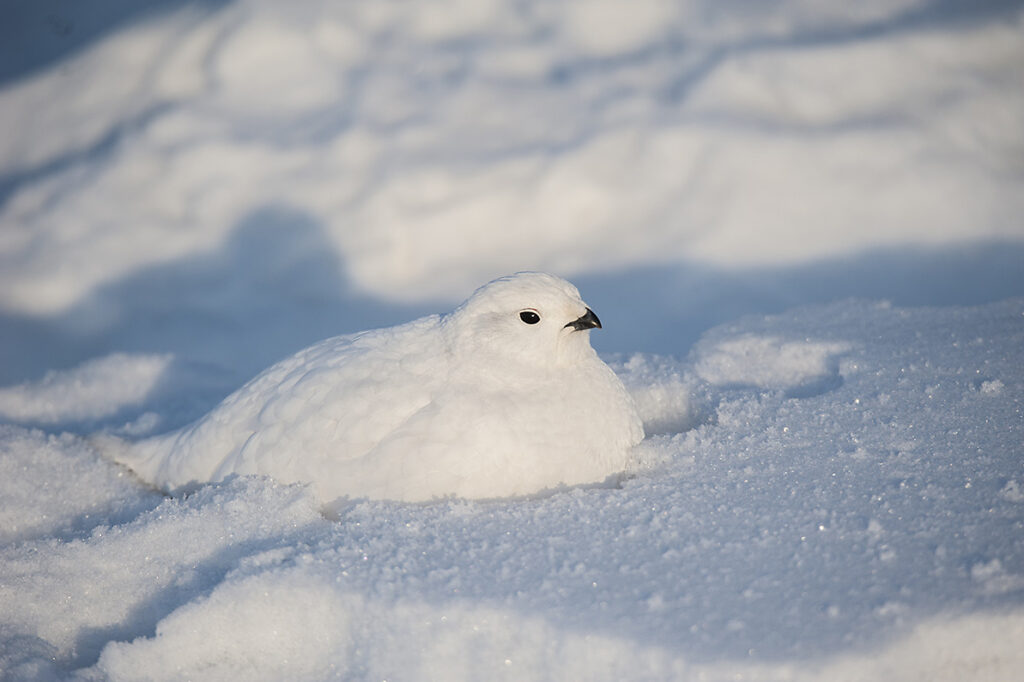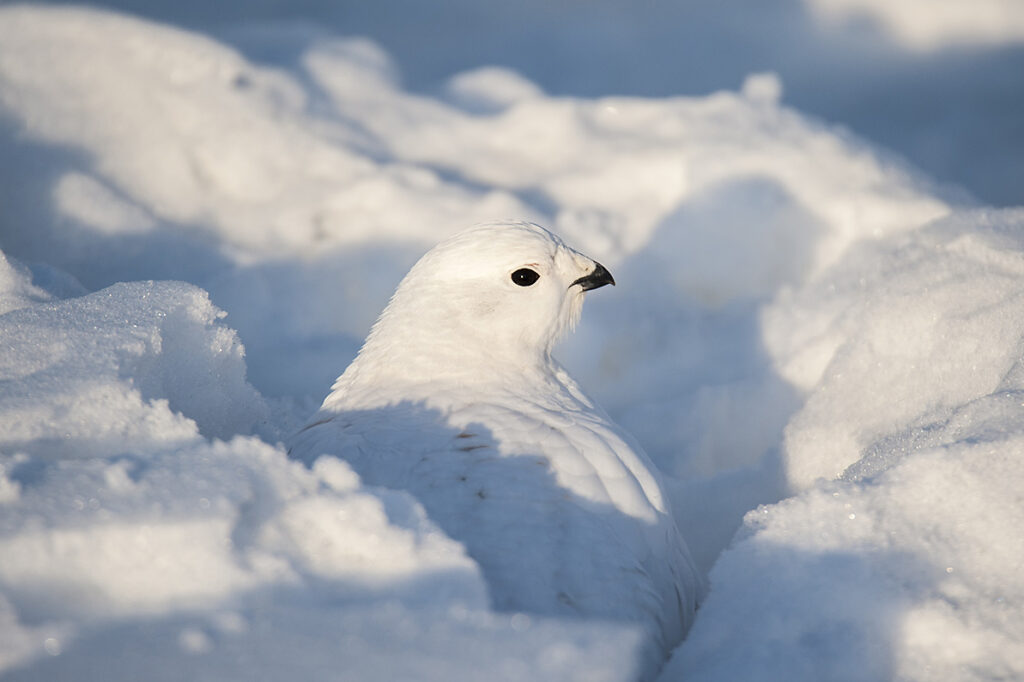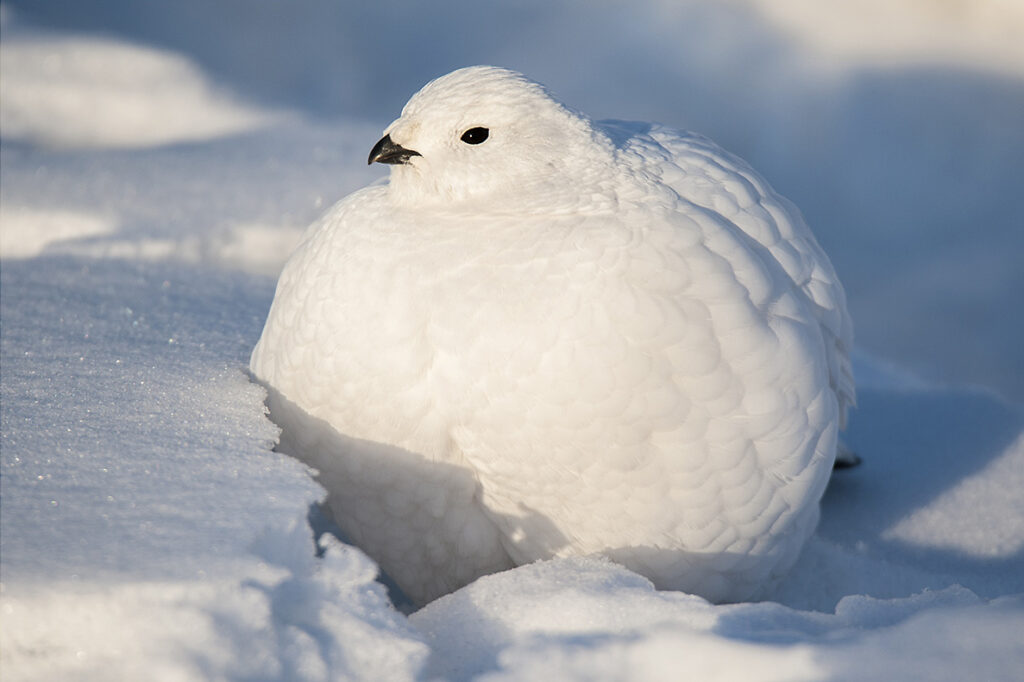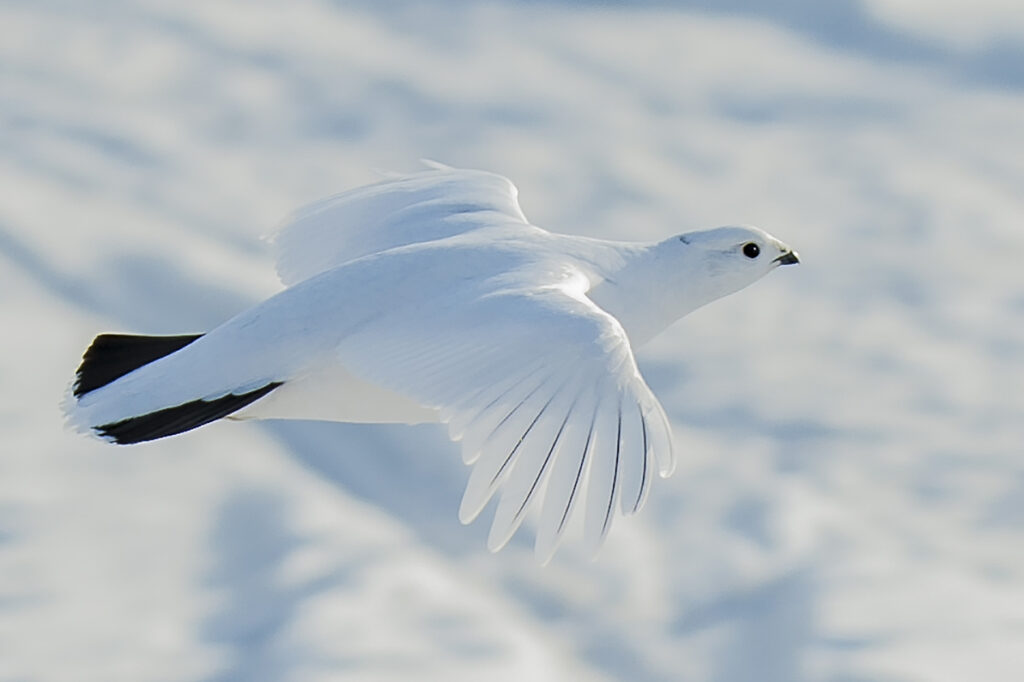The chicken-like willow ptarmigan, weighing less than a kilogram, has the largest circumpolar range of any of the world’s 19 species of grouse. Its unwary nature makes this handsome bird one of my favorite subjects to observe and photograph. In North America, these hardy northern grouse are year round residents of Arctic and sub-arctic latitudes. Their tenacity makes them one of a small handful of birds that dares to tough out winter in the north and they do this relying on a suite of clever adaptations.
As autumn turns into winter, the hours of daylight decrease. It is the fewer hours of daylight which signal the brain of the ptarmigan to shed its brown feathers and replace them with white ones. Surprisingly, neither the temperature nor the snowfall affects the timing of this, which explains why a ptarmigan may turn white before it has snowed.
Molting from a thinner mottled-brown plumage in summer into thicker white feathers in winter is the ptarmigan’s most obvious adaptation. Their cryptic winter plumage is primarily a defense against their main avian predators: gyrfalcons and golden eagles.
Adding to their effective camouflage is the wintering ptarmigan’s tendency to form flocks, sometimes containing 30 to 50 birds. Grouping together increases the chances that one or more of the birds will spot a potential predator, alert the flock, and thwart an attack.
Ptarmigan do most of their foraging in winter by walking across the snow and nipping off the terminal twigs and buds of shrubby willows, dwarf birches, and fireweed.
To help them do this the hungry birds use their own set of personal “snowshoes”. At the start of winter the bare toes of a ptarmigan grow a thick covering of white feathers. The feathers increase the surface area of the ptarmigan’s feet by a factor of four and therefore reduce by a half how deeply the bird sinks into powdery snow. Their winter footwear also includes significantly longer toenails which help them to dig more easily through crusty snow.
The ptarmigan’s most ingenious winter survival tactic is to spend up to 80% of its time hidden in a snow burrow. Typically, a ptarmigan forages just twice a day, once at dawn and then again as dusk, each session lasting less than 50 minutes. The subdued light of dusk and dawn lessens their detection by most avian predators. Once a ptarmigan’s crop is full it takes just 30 seconds or less for it to dig a shallow tunnel under the snow, sometimes up to two meters (6 ft.) long, where it can digest its meal hidden in relative safety. The snow also insulates the sequestered bird from the deep cold of Arctic nights and keeps the burrow temperature within a few degrees of freezing even when the outside temperature dips below -40C (-40F). In exceptionally cold, stormy weather a snow-roosting ptarmigan may spend several days in its burrow before being forced to emerge to feed. Each burrow is used only once.
The black tips on a willow ptarmigan’s tail is believed to be a survival tactic which distracts an attacking falcon or eagle and cause them to strike the bird in an area of its body where the chance for escape is greatest.
About the Author – Dr. Wayne Lynch
For more than 40 years, Dr. Wayne Lynch has been writing about and photographing the wildlands of the world from the stark beauty of the Arctic and Antarctic to the lush rainforests of the tropics. Today, he is one of Canada’s best-known and most widely published nature writers and wildlife photographers. His photo credits include hundreds of magazine covers, thousands of calendar shots, and tens of thousands of images published in over 80 countries. He is also the author/photographer of more than 45 books for children as well as over 20 highly acclaimed natural history books for adults including Windswept: A Passionate View of the Prairie Grasslands; Penguins of the World; Bears: Monarchs of the Northern Wilderness; A is for Arctic: Natural Wonders of a Polar World; Wild Birds Across the Prairies; Planet Arctic: Life at the Top of the World; The Great Northern Kingdom: Life in the Boreal Forest; Owls of the United States and Canada: A Complete Guide to their Biology and Behavior; Penguins: The World’s Coolest Birds; Galapagos: A Traveler’s Introduction; A Celebration of Prairie Birds; and Bears of the North: A Year Inside Their Worlds. In 2022, he released Wildlife of the Rockies for Kids, and Loons: Treasured Symbols of the North. His books have won multiple awards and have been described as “a magical combination of words and images.”
Dr. Lynch has observed and photographed wildlife in over 70 countries and is a Fellow of the internationally recognized Explorers Club, headquartered in New York City. A Fellow is someone who has actively participated in exploration or has substantially enlarged the scope of human knowledge through scientific achievements and published reports, books, and articles. In 1997, Dr. Lynch was elected as a Fellow to the Arctic Institute of North America in recognition of his contributions to the knowledge of polar and subpolar regions. And since 1996 his biography has been included in Canada’s Who’s Who.



